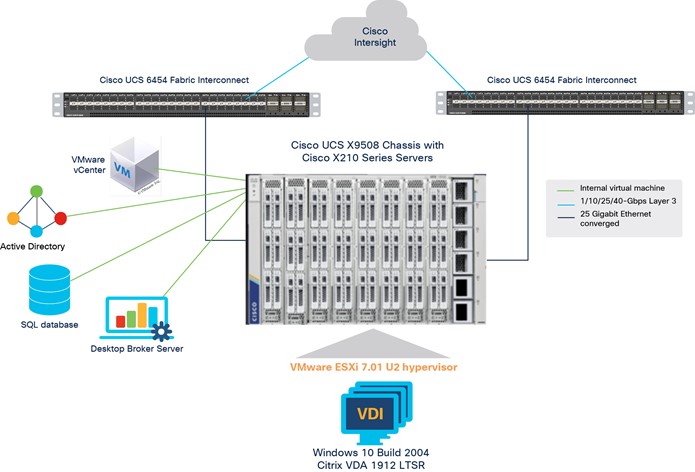Choosing the best model
Thirty years ago, I bought a 1991 Honda Accord. I reasoned that as this newly designed model had debuted in 1990, it was ‘safe’ to buy as Honda had a year to work out any issues. Today car buyers may follow a similar practice, but IT managers cannot afford to wait to experience that ‘new car smell’. Business moves too fast, remote users need immediate and secure access to applications and data, and according to the Harvard Business School, 81% of these users will stay at least partially remote in the future. Cisco understands that buyers want to see that new ‘car’ test driven on a racetrack with the best setups documented and performance realized.
Cisco’s new ‘car’ is the Cisco UCS® X-Series powered by Cisco Intersight.™ It is a modular, cloud-managed system designed to meet the needs of modern applications and improve operational efficiency, agility, and scale through an adaptable, future-ready design. The components that can be assembled into systems through the Cisco Intersight cloud operating model. Intersight brings the power of SaaS to deliver proactive monitoring, automation, observability, and optimization of workloads across hybrid cloud environments.
Cisco UCS X-Series
Cisco UCS X-Series provides functionalities of both blade and rack servers by offering compute density, storage capacity, and expandability in a single system, embracing a greater range of workloads in your data center. It begins with the Cisco UCS X9508 Chassis engineered to be adaptable and future-ready. With a midplane-free design, I/O connectivity for the X9508 Chassis is accomplished with front-loading vertically oriented computing nodes that intersect with horizontally oriented I/O connectivity modules in the rear of the chassis. A unified Ethernet fabric is supplied with the Cisco UCS 9108 Intelligent Fabric Modules. In the future, Cisco UCS X-Fabric interconnects will supply other industry-standard protocols as standards emerge. Interconnections can easily be updated with new modules.
The Cisco UCS X210c M6 compute node, with 3rd Gen Intel® Xeon® Scalable processors, provides the functionalities of both blade and rack servers by offering compute density, storage capacity, and expandability in a single form factor. Up to eight Compute Nodes can fit within the Cisco UCS X9508 Chassis.
 Cisco X9508 Chassis
Cisco X9508 Chassis
People purchase cars to solve a transportation problem which could include hauling around any number of items. IT systems are purchased not to have shiny new hardware sitting in the data center but rather to solve an IT challenge. Cisco UCS X-Series is designed to solve any number of application and data center challenges, but let’s take a closer look at Virtual Desktop Infrastructure (VDI).
COVID-19 hit the IT industry like a tsunami! Overnight business had to define how all their employees could work remotely. Contracting with a public cloud was the immediate answer, for it gave employees immediate and secur access to applications and data and the ability to work at home. Now customers want to lower their IT costs, define the exact security profiles they want to implement, and bring their VDI back to their data center. Cisco UCS X-Series is the answer! But the question for new buyers is: Has anyone test driven X-Series for VDI?
The Test Drive Results
The short answer is YES! Cisco just published a whitepaper that details how to deploy a Cisco UCS X210c M6 compute node within the new Cisco X9508 chassis using Cisco Intersight. In car terms, we started the engine. Next, we took the car for a spin. We used Login VSI to ramp up the number of users with similar remote access requirements on Citrix LTSR for a Knowledge Worker or Professional Worker and showed how well the system performed. As you might guess, this car demonstrated excellent performance easily scaling to 280 users, which is 33% higher than the previous generation M5 servers.
Cisco has already extended this test drive by validating Cisco X-Series as the key element within a FlexPod and FlashStack converged infrastructure configuration. Next, we want to build from these configurations and add the key VDI brokers of Citrix and VMware Horizon and demonstrate how well these designs scale to meet our customers’ needs.
Cisco X-Series is a tested solution ready for you to drive out on the open road to your next VDI challenge. Just contact your Cisco sales team or partner for details, and soon you will enjoy that new car smell.
Resources:
Cisco UCS X210c M6 compute node

CONNECT WITH US